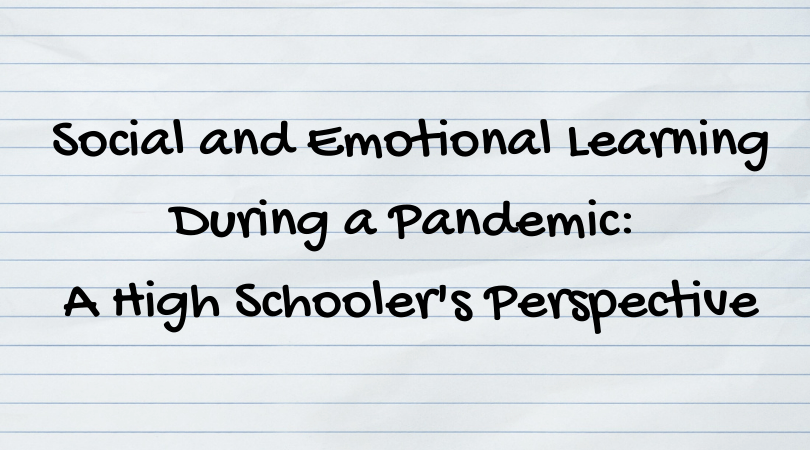
In this blog post, Lee & Low intern Dylan Low reflects on her own experiences to highlight the importance of social and emotional learning/health for students in the time of the COVID-19 pandemic.
The pandemic has been very challenging for teens, and as a junior in high school, this past year was complicated.
However, I’m fortunate to attend a high school that also prides itself on mental health, social and emotional learning, and supporting students in ways beyond just academics. This year, we launched Social and Emotional Learning Days, and as I reflect on this past year I realize how valuable and meaningful SEL at the high school level is.
In 1994, the term ‘SEL’ was coined by the Collaborative to Advance Social and Emotional Learning (CASEL). Its initiative was to promote positive development and self awareness within children, and ultimately lead them to more successful futures.
During the pandemic, everyone’s lives around the globe was altered. After the initial storm of people running to the supermarket to stock up on toilet paper, food, and supplies, people had to work with the seemingly infinite obstacle of isolation. We realized that we had taken our everyday routines for granted, such as going to work, attending school, and eating at restaurants. The world’s new standards became a cause for stress, anxiety, and depression. Activities that were considered normal during pre-pandemic times allowed people the space to be away from their homes and their personal lives.
In our society, mental health has, at times, been a stigmatized and polarizing topic of discussion. Common responses included encouraging people to work through it, or ignore whatever problems they’re facing in order to succeed. However, the emergence of SEL in schools can provide children with an outlet to openly discuss their problems with their peers and educators, along with opportunities to participate in activities that don’t involve academic stress.
In my high school, students are allowed to pick from a plethora of activities that are run by teacher volunteers. Examples of activities include watching movies or television, learning how to bake new recipes, creating digital art, or just having simple discussions with teachers. In my experiences, I participated in online baking classes and learned how to bake a lemon cake for fun. Although some could say that a lemon cake isn’t as impressive as learning calculus or AP English, the joy of learning a non-academic skill during school hours was precious to me. There was a clear effort made by teachers to intertwine mental health into discussions throughout class. For me, especially as I went through my junior year, it was a relief to receive moments specifically dedicated to helping students and allowing them to focus on their emotions.
Although it was only my school’s first year of holding Social Emotional Learning Days, the positive impact was notable. The earlier children are taught the importance of voicing their emotions and being attentive to their peers’ feelings, the more open the future generations will be with doing the same thing and preventing future stigma. It’s also important to recognize that social and emotional learning is most successful when extended to all aspects of one’s life, not just as a discussion in school. For example, the topic of SEL would be extremely valued in homes, the workforce, and other institutions.
Overall, it is tremendously important for people to learn about social and emotional health through books and discussions at school, and I’m excited to see how the subject progresses as awareness grows.

Dylan Low is one of Lee & Low’s summer interns. As a New York City high school senior, she enjoys playing volleyball, being with friends and family, and baking. She looks forward to future work with Lee & Low.








